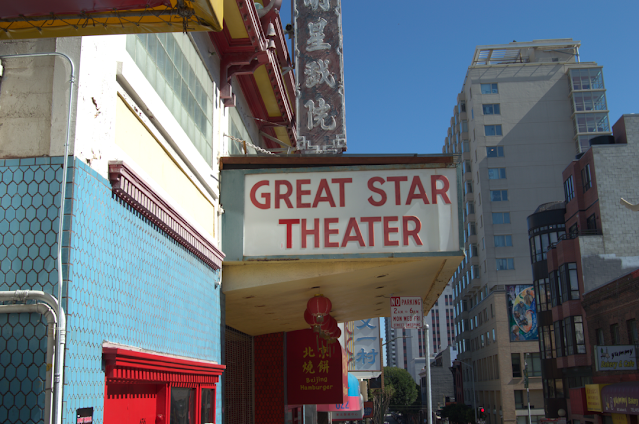Group 2 Post 2
Half of our group was fortunate enough to go on the walking tour of San Francisco Chinatown theaters led by Mr. Lei, where we also got the opportunity to go on a quick tour of the Great Star Theater. It was amazing to be in the physical space and learn more about how the theater is being restored and revitalized to serve members of the community like it used to. The tour was led by executive director Roger Pincombe who gave us some clues as to how the building fared under previous owners and left us with many more questions about the theater’s past role in the Chinatown community and how that experience looks different today.
The Great Star Theater isn’t meant to be left as a monument to a past age, it is leased with the intention of continuing its great legacy. However, maintaining a building almost 100 years old has many challenges. As with any historic building being used by the public, there’s a fascinating balance that must be found between updating the operation and services for a modern audience while preserving the theater as a historic cultural space. Disrepair from aged materials is inevitable and the tour revealed an interesting combination of the two directions.
One of the most significant changes made when modernizing the space after so long without use was the new projection setup. The changes were necessary to accommodate modern media consumption: using digital projectors instead of film gives the Great Star Theater the opportunity to host a wider variety of contemporary films including local screenings or festivals and thus cement its place in the current cultural landscape of Chinatown. The place where the old projector used is hidden behind the newer light systems set up on the balcony and the contrast between the old and new technology raises questions of how the theater experience is changing and adapting to different times. Right now the theater is forgoing screenings in favor of hosting live events on the stage. What does this change mean for a space with a rich historical legacy of film? Is the relationship with the surrounding community changing based on the availability of different types of events? Are these changes a deviation from the past, or an inherent effect of a collective cultural space adapting to serve different generations?




This is a really wonderful report and reflection inspired from the fieldtrip and visit to the Great Star Theater. Thank you for introducing us to the theater environment and recent history, as well as to your own experience visiting there. Talking to Roger Pincombe will be great and hopefully the interview with theater management will yield some more interesting perspectives. Your questions are very rich - looking forward to seeing where your group goes with the questions of community and viewing history. At some point, it will be also good for your group to explore UC Berkeley and maybe some San Francisco/Chinatown library collections as well to find some primary documents, or the flyers and other materials at the East Asian Library. David Lei may also be a great source to contact to ask about theater materials and archives. I wonder, what kinds of performances are happening now at Great Star, and what kinds of screenings and performances happened in the theater space in the past?
ReplyDelete